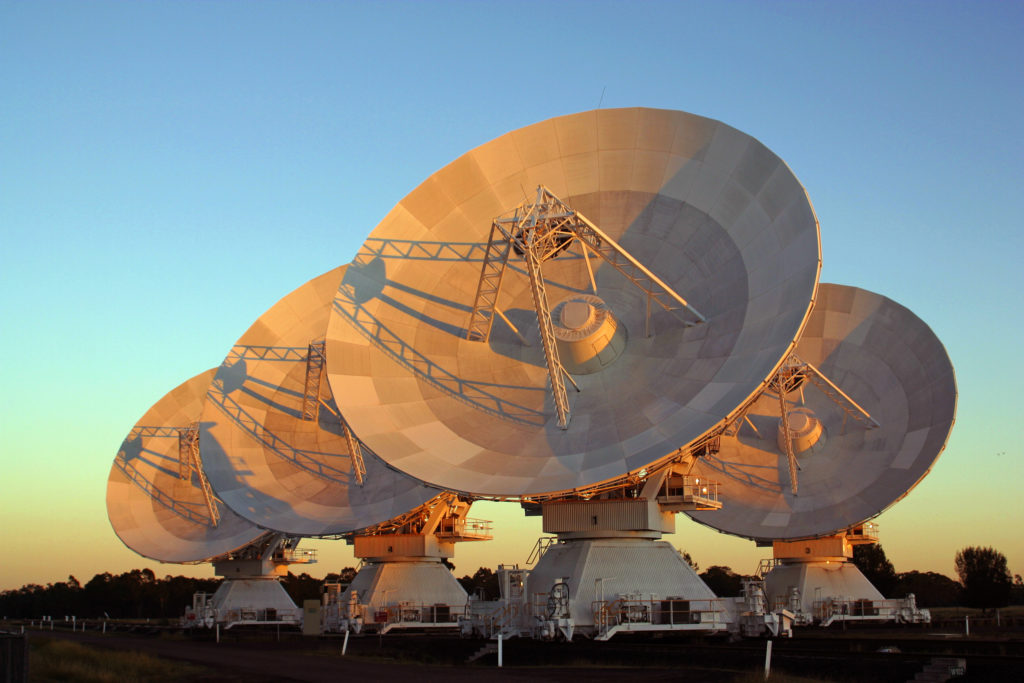
Four of the six antennas of the Australia Telescope Compact Array.
Four of the six antennas of the Australia Telescope Compact Array.
As Australia comes hot off the back of being behind receiving the Cassini satellite’s last breath of data, and with plenty of experience notched up since we first started looking into space (ahem!) over 70 years ago, just what does the future hold?
History is always a good place to start. And history so far shows that one of Australia’s key strengths beyond its geography is data.
On 21 July 1969 Australian Eastern Standard Time (AEST), mankind took its ‘one giant leap’ and 600 million people watched as Neil Armstrong walked on the Moon. Our Parkes radio telescope famously supported receiving the television signals on that momentous day.
Recently, we designed and built an Australian precursor to the Square Kilometre Array, which we call ASKAP, the world’s most powerful radio survey telescope – which for the next decade will enable us to see 600,000,000 light years or half way back to the beginning of time.
When most people think of a space industry, they think about big projects like the International Space Station (ISS), the Voyager program, or the Mars Rover – but today organisations are launching their own satellites, and they are the size of a loaf of bread. The emergence of the small satellite market is disrupting the industry. It is making space cheaper and easier to access – because with satellites and space, comes big data.
Data capture and collection, data processing and analysis, and cheaper, deeper space exploration are new directions for the industry.
We are also seeing the emergence of a space start-up sector working on space 2.0 applications. Gilmour Space Technologies in Queensland is an example. They are aiming to develop and launch low-cost hybrid rockets for the fast-growing small satellite (smallsat) market – under the tagline ‘low cost access to space’.
Earth Observation data is also becoming more readily available and allowing us to track Australia’s environment more closely.
We have used earth observation data to establish “Sentinel Hotspots” for bushfire tracking. Partners in this project were Defence, Geoscience Australia and the US Forest Service. It was so successful that it was transferred for routine operational service to GA in 2006, and today uses data from multiple US and Japanese satellites, to provide information on bushfires across all of Australia via the web.
Whatever the future holds for Australia’s space industry, exciting times are ahead, and big data will play a big part.


25th September 2017 at 4:37 pm
Big data is really important. Really important. So it’s important to know that “half way back to the beginning of time” would be around 6.7 billion light years, not 600 million light years, and that it’s a measure of distance, not time, although in this case the two equate to a degree. Also I would have thought that ASKAP could push back well beyond that with its capabilities. Sorry to pedantic.
Pingback: Big data (not big rockets) set to propel Australia’s space science – MeasurementDataBases for Industry & Science